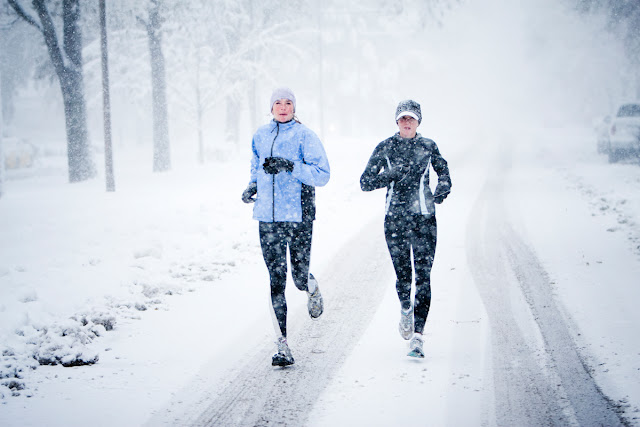Exercising in the Cold
With the temperature getting closer to 0°C, many factors including the environment, clothing, body composition, nutrition, age, and exercise intensity in the cold may elicit additional physiologic strain or injury risk beyond that associated with regular conditions. An individual’s core temperature may drop and contribute to hypothermia, frostbite, or diminished exercise capability. Care must be taken into wearing proper clothing and footwear to minimize cold stress to the body or slippage.
Clothing Considerations:
1) Three layers:
a. inner layer such as lightweight polyester or polypropylene
b. middle layer such as polyester fleece or wool
c. outer layer to transfer moisture to the air and repel wind or rain
2) Protect your head, hands, feet, and ears
3) Adjust insulation to minimize sweating
4) Use clothing vents to reduce sweat accumulation
5) Do not wear an outer layer unless rainy or windy
6) Reduce clothing insulation as exercise intensity increases
Exercise tips:
1) Check the forecast before heading outside as a combination of wind and cold can penetrate your clothing layers, increasing risk of frostbite
2) Drink plenty of fluids
3) Wear sunscreen or bring heat packs to warm up your hands and feet
4) Know the signs and symptoms of frostbite:
a. typically occurs when temperatures fall below 0°C (32°F)
b. more prevalent with exposed skin (e.g. face, hands)
c. some early signs include: feeling of numbness or stinging
5) Know the signs and symptoms of hypothermia:
a. abnormally low body temperature (heat production is less than heat loss)
b. some early signs: shivering, slurred speech, loss of coordination, fatigue
InSync Physiotherapy is a multi-award winning health clinic helping you in Sports Injuries, Physiotherapy, Exercise Rehabilitation, Massage Therapy, Acupuncture & IMS.


